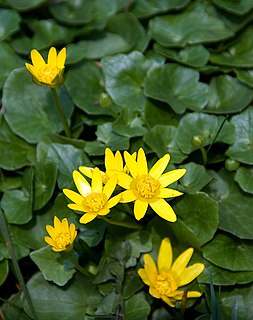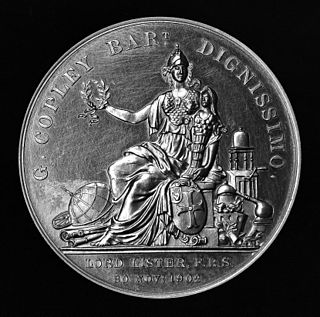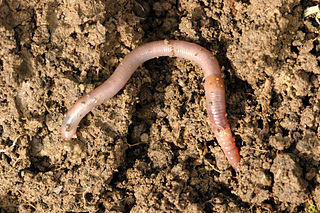Related Research Articles

Rothamsted Research, previously known as the Rothamsted Experimental Station and then the Institute of Arable Crops Research, is one of the oldest agricultural research institutions in the world, having been founded in 1843. It is located at Harpenden in the English county of Hertfordshire and is a registered charity under English law.

Vermicompost (vermi-compost) is the product of the decomposition process using various species of worms, usually red wigglers, white worms, and other earthworms, to create a mixture of decomposing vegetable or food waste, bedding materials, and vermicast. This process is called vermicomposting, while the rearing of worms for this purpose is called vermiculture.

Behavioral economics studies the effects of psychological, cognitive, emotional, cultural and social factors on the decisions of individuals and institutions and how those decisions vary from those implied by classical economic theory.

Lumbricus terrestris is a large, reddish worm species thought to be native to Western Europe, now widely distributed around the world. In some areas where it is an introduced species, some people consider it to be a significant pest for out-competing native worms.

Ficaria verna, commonly known as lesser celandine or pilewort, is a low-growing, hairless perennial flowering plant in the buttercup family Ranunculaceae native to Europe and Western Asia. It has fleshy dark green, heart-shaped leaves and distinctive flowers with bright yellow, glossy petals. It is now introduced in North America, where it is known by the common name fig buttercup and considered an invasive species. The plant is poisonous if ingested raw and potentially fatal to grazing animals and livestock such as horses, cattle, and sheep. For these reasons, several US states have banned the plant or listed it as a noxious weed. It prefers bare, damp ground and is considered by horticulturalists in the United Kingdom as a persistent garden weed; nevertheless, many specialist plantsmen, nursery owners and discerning gardeners in the UK and Europe collect selected cultivars of the plant, including bronze-leaved and double-flowered ones. Emerging in late winter with flowers appearing late February through May in the UK, its appearance across the landscape is regarded by many as a harbinger of spring.

John Robert Horner is an American paleontologist most famous for discovering and naming Maiasaura, providing the first clear evidence that some dinosaurs cared for their young. In addition to his paleontological discoveries, Horner served as the technical advisor for all the Jurassic Park films, had a cameo appearance in Jurassic World, and served as a partial inspiration for one of the lead characters of the franchise, Dr. Alan Grant. Horner studied at the University of Montana, although he did not complete his degree due to undiagnosed dyslexia, and was awarded a Doctorate in Science honoris causa. He retired from Montana State University on July 1, 2016, although he claims to have been pushed out of the Museum of the Rockies after having married an undergraduate student and now teaches as a Presidential Fellow at Chapman University.

The Copley Medal is an award given by the Royal Society, for "outstanding achievements in research in any branch of science". It alternates between the physical sciences or mathematics and the biological sciences. Given every year, the medal is the oldest Royal Society medal awarded and the oldest surviving scientific award in the world, having first been given in 1731 to Stephen Gray, for "his new Electrical Experiments: – as an encouragement to him for the readiness he has always shown in obliging the Society with his discoveries and improvements in this part of Natural Knowledge".

The Royal Society, formally The Royal Society of London for Improving Natural Knowledge, is a learned society and the United Kingdom's national academy of sciences. Founded on 28 November 1660, it was granted a royal charter by King Charles II as The Royal Society. The society fulfils a number of roles: promoting science and its benefits, recognising excellence in science, supporting outstanding science, providing scientific advice for policy, fostering international and global co-operation, education and public engagement.
The British Psychological Society (BPS) is a representative body for psychologists and psychology in the United Kingdom.

Stanley N. Cohen was an American biochemist who, along with Rita Levi-Montalcini, was awarded the Nobel Prize in Physiology or Medicine in 1986 for the isolation of nerve growth factor and the discovery of epidermal growth factor. He died in February 2020 at the age of 97.

Lewis Wolpert was a South African-born British developmental biologist, author, and broadcaster. Wolpert was best known for his French flag model of embryonic development, where he used the French flag as a visual aid to explain how embryonic cells interpret genetic code for expressing characteristics of living organisms and explaining how signalling between cells early in morphogenesis could be used to inform cells with the same genetic regulatory network of their position and role.

The giant Palouse earthworm or Washington giant earthworm is a species of earthworm belonging to the genus Driloleirus inhabiting the Palouse region of Eastern Washington and North Idaho, in the United States. The worm was discovered in 1897 by Frank Smith near Pullman, Washington. It can burrow to a depth of 15 feet (4.6 m).
The Oregon giant earthworm is one of the largest earthworms found in North America, growing to more than three feet in length. First described in 1937, the species is not common. Since its discovery, specimens have been documented in only fifteen locations within Oregon's Willamette Valley.

Rhamnus cathartica, the European buckthorn, common buckthorn, purging buckthorn, or just buckthorn, is a species of small tree in the flowering plant family Rhamnaceae. It is native to Europe, northwest Africa and western Asia, from the central British Isles south to Morocco, and east to Kyrgyzstan. It was introduced to North America as an ornamental shrub in the early 19th century or perhaps before, and is now naturalized in the northern half of the continent, and is classified as an invasive plant in several US states and in Ontario, Canada.

Invasive species of earthworms from the suborder Lumbricina have been expanding their range in North America. Their introduction can have marked effects on the nutrient cycles in temperate forests. These earthworms increase the cycling and leaching of nutrients by breaking up decaying organic matter and spreading it into the soil. Since plants native to these northern forests are evolutionarily adapted to the presence of thick layers of decaying organic matter, the introduction of worms can lead to loss of biodiversity as young plants face less nutrient-rich conditions. Some species of trees and other plants may be incapable of surviving such changes in available nutrients. This change in the plant diversity in turn affects other organisms and often leads to increased invasions of other exotic species as well as overall forest decline. They do not require a mate to reproduce, allowing them to spread faster.

Science and technology in the United Kingdom has a long history, producing many important figures and developments in the field. Major theorists from the United Kingdom of Great Britain and Northern Ireland include Isaac Newton whose laws of motion and illumination of gravity have been seen as a keystone of modern science and Charles Darwin whose theory of evolution by natural selection was fundamental to the development of modern biology. Major scientific discoveries include hydrogen by Henry Cavendish, penicillin by Alexander Fleming, and the structure of DNA, by Francis Crick and others. Major engineering projects and applications pursued by people from the United Kingdom include the steam locomotive developed by Richard Trevithick and Andrew Vivian, the jet engine by Frank Whittle and the World Wide Web by Tim Berners-Lee. The United Kingdom continues to play a major role in the development of science and technology and major technological sectors include the aerospace, motor and pharmaceutical industries.
Nudge theory is a concept in behavioral economics, political theory, and behavioral sciences that proposes positive reinforcement and indirect suggestions as ways to influence the behavior and decision-making of groups or individuals. Nudging contrasts with other ways to achieve compliance, such as education, legislation or enforcement.
Earthworms are invasive species throughout the world. Of a total of about 6,000 species of earthworm, about 120 species are widely distributed around the globe. These are the peregrine or cosmopolitan earthworms. Some of these are invasive species in many regions.
The Initiative for Science, Society and Policy (ISSP) is a research center sponsored by the University of Southern Denmark and Roskilde University, Denmark.

Allolobophora chlorotica, commonly known as the green worm, is a species of earthworm that feeds and lives in soil. This species stands out from other earthworms due to the presence of three pairs of sucker-like discs on the underside of the clitellum. An examination of A. chlorotica specimens from many parts of the British Isles suggests that there are two forms of this species, one with green pigment in the body wall, and one which lacks this pigment, making it pink.
References
- ↑ "Earthworm Society of Britain launch event - a scientific test of worm charming | OPAL". Opalexplorenature.org. Retrieved 2016-10-17.
- ↑ Smith, Lewis (2009-11-02). "Earthworm invaders nudging out British species". Telegraph. Retrieved 2016-10-17.
- ↑ Lewis Smith (November 2, 2009). "Earthworm invaders nudging out British species". The Telegraph. Retrieved 6 March 2016.
- ↑ "Recording Earthworms". Earthwormsoc.org.uk. Archived from the original on 2016-07-02. Retrieved 2016-10-04.